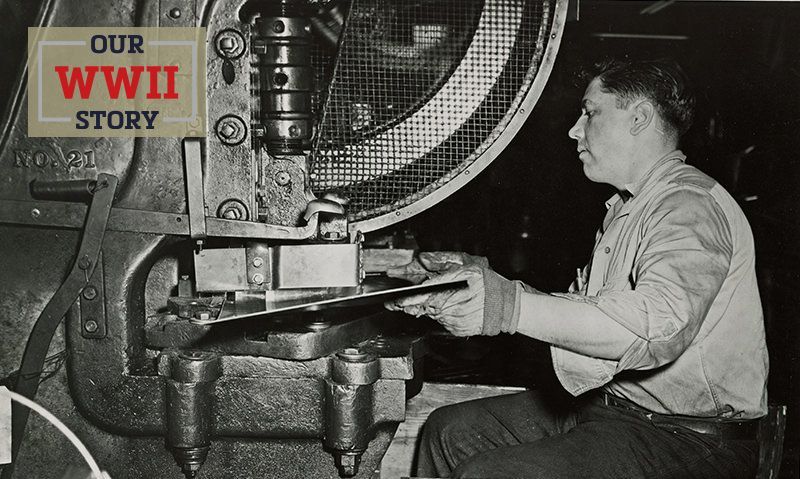
Advantages for veterans seeking civil service jobs finally took shape in 1944.
From its dawn in the aftermath of World War I, The American Legion assumed a proactive role to help war veterans find gainful employment after discharge. The effort took many shapes across the country.
Early American Legion posts served as job-placement centers. Legionnaires called around the country to find out where logging camps, mills, factories, builders, farms and other businesses were hiring. Posts would even transport veterans to job sites out of town. Often, Legionnaires were known to say, the grassroots organization outperformed government employment agencies in helping wartime veterans find jobs that others had filled while they were fighting.
The concept of providing certain advantages or employment-protection opportunities for veterans who served during times of armed conflict could be traced back to the Civil War, when such policies, laws and programs were largely dedicated to helping those who had become disabled through wartime service. Multiple programs and pursuits in the area of veterans preference hiring came and went over the decades, with mixed reviews and performance, until the final chapter of World War II when the Veterans Preference Hiring Act was passed and went into effect. Notably, it changed the paradigm in that congressional oversight would be required for any modifications; earlier programs had largely been the products of executive orders from the administration.
The American Legion’s National Employment Committee had been working closely with industry – including the United States Chamber of Commerce, as it does today in shared veteran job fairs across the country – to get support for dedicated veteran-hiring programs throughout the 1930s. The National Association of Manufacturers was on board with the Legion’s recommendations. Jay Hormel of Hormel Foods in Rochester, Minn., was vice chairman of the Legion’s committee that produced the recommendations. Ford Motor Co. had revived a post-World War I program called “Camp Legion” in a 500-acre facility that provided training and employment for thousands of disabled World War II veterans.
The nation’s largest employer, however, was the nation itself. With an unprecedented wave of wartime veterans about to enter America’s job market, The American Legion worked with the Civil Service Commission and other veterans service organizations to lay a foundation that would add points for wartime veteran applicants when seeking government jobs. It did not guarantee jobs for veterans. It had no bearing on promotions. The main feature was that a veteran would be awarded five to 10 points more on civil service exams should a tie need to be broken with another candidate.
“Your committee fully realizes that government cannot provide jobs for all in the post-war period,” American Legion National Employment Committee Chairman Lawrence J. Fenlon of Illinois told the National Executive Committee at its May 1, 1944, meeting. “We do believe, however, that, as the largest single employer in the nation, the government should accord to the men and women who were preferred and privileged to serve the government in time of war the same privilege and performance in serving their government in time of peace, if qualified.”
Rep. Joe Starnes, D-Ala., a World War I officer and Legionnaire, introduced H.R. 4115, the Veterans Preference Hiring Act, on Feb. 3, 1944. “It is a reward for… patriotic duties well performed,” Starnes said when he introduced the legislation that was signed into law on June 27, 1944. “It encourages our young men and women to serve their country in an hour of need, and it makes them feel when they have given their all or offered to give all in defense of this country and its institutions that a grateful country will recognize their sacrifice and service when peace comes, by giving them preference for service in various capacities within their government.”
The 1944 measure faced challenges but had support from the White House. “It is absolutely impossible to take millions of our young men out of their normal pursuits for the purpose of fighting to preserve the nation and then expect them to resume their normal activities without having any special consideration shown them,” President Franklin D. Roosevelt observed.
The Veterans Preference Hiring Act would go through many changes and expansions – and The American Legion fought against dilutions of the benefit – for years. By 1951, about half of the nation’s 2 million federal employees were veterans (today, it is about 31 percent). Still, the Hoover Commission’s much-maligned report on government employment and personnel aimed to give federal agencies “free reign” to separately manage their staffing policies and, effectively, ignore the Veterans Preference Hiring Act if they so wished.
Fenlon, who in the 1950s was chairman of The American Legion Economic Commission, warned that the “free-reign gimmick” would not only harm veterans “but all government job applicants of the ‘wrong’ race, religion, family, politics, sex, habit of thought or social group.”
As the Korean War unfolded, the Hoover Report – which proposed multiple reductions in services to veterans – fell off the national agenda. Soon, Korean War veterans, followed by Vietnam War veterans, Gulf War and Post-9/11 veterans were advanced Veterans Preference Hiring Act points benefits. Still, throughout the years, it has faced critics and media opinions suggesting that the entire proposition be reconsidered.
An American Legion national resolution, passed at the Aug. 30-Sept. 1, 2016, National Convention in Cincinnati, reaffirmed the organization’s position deploring “each and every attempt to degrade, dilute or modify the historical precedence of giving job eligibility preference to those who are taken from their communities to serve their country in time of war.”
In its 2020 legislative agenda, The American Legion reiterated its position to protect the Veterans Preference Hiring Act and called on Congress to reaffirm the spirit of the 1944 law, as it was intended, to “assist veterans from every socioeconomic class, gender, religion, ethnicity, sexual orientation and creed” in pursuit of work for the government they pledged their lives to defend.
- Education

